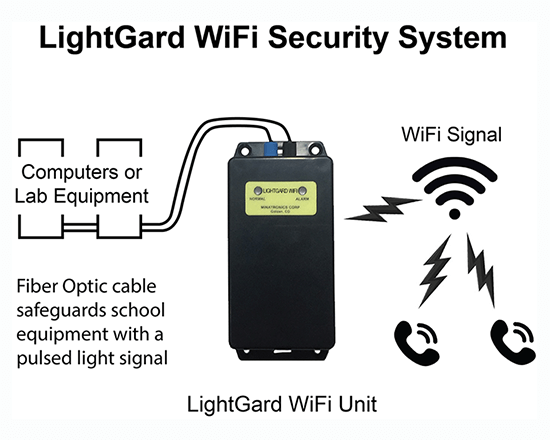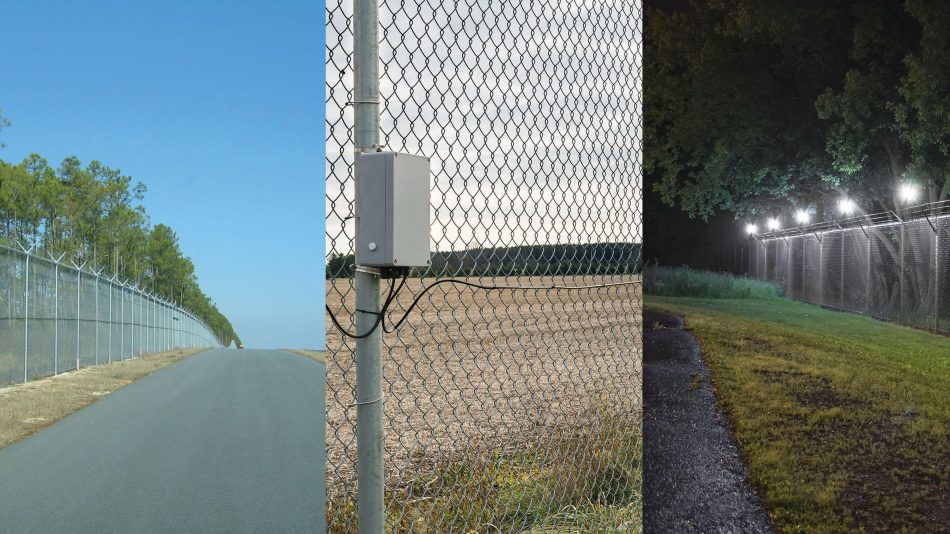Why a Fiber Optic Security System Is Crucial for High-Security Facilities and Environments
Improve Your Safety With Advanced Fiber Optic Protection Systems
In an era where safety and security is vital, sophisticated fiber optic security systems offer an engaging option for enhancing security throughout numerous settings. What implications do these innovations hold for future safety procedures?
Advantages of Fiber Optic Safety And Security
Using the benefits of fiber optic modern technology considerably enhances safety and security systems throughout numerous applications. Among the main advantages is the boosted bandwidth ability, enabling the transmission of large quantities of information at broadband. This is specifically critical for real-time video clip monitoring, where high-resolution feeds can be sent without latency, guaranteeing instant action capabilities.
Additionally, fiber optics display superior resistance to electro-magnetic disturbance, which is crucial in settings with prospective signal disturbances. This integrity makes certain constant efficiency in vital safety and security operations. Fiber optic cable televisions are much less susceptible to tapping and unapproved access compared to typical copper electrical wiring, consequently improving data stability and privacy.
One more significant benefit is the longevity of fiber optic systems; they are more immune to environmental aspects such as dampness, temperature level fluctuations, and destructive compounds. This resilience equates to lower maintenance costs and longer life expectancies for protection setups.
Last but not least, the lightweight nature of fiber optic cables assists in easier setup and routing, particularly in complex frameworks (fiber optic security system). Inevitably, the assimilation of fiber optic innovation right into safety and security systems not only reinforces protection procedures but likewise maximizes operational performance
Secret Features to Take Into Consideration
When evaluating fiber optic safety and security systems, numerous vital functions need to be considered to make sure ideal performance and efficiency. Evaluate the system's discovery array and level of sensitivity; a substantial array permits for keeping an eye on large locations, while high sensitivity ensures that also small disturbances are identified without delay.
Next, think about the combination abilities of the system. A fiber optic safety and security system ought to seamlessly interface with existing security measures such as electronic cameras and alarm systems, producing a cohesive safety and security network.
Sturdiness and environmental resistance are likewise essential features. Ensure that the system is developed to withstand severe weather problems and potential physical hazards, as this will certainly lengthen its functional life-span.

Finally, explore the scalability of the system. A robust fiber optic safety and security system ought to be conveniently expandable to fit future demands without substantial overhauls. By thoroughly taking into consideration these attributes, you can choose a fiber optic safety and security remedy that enhances safety and security and safety and security in your environment.
Installation Process Introduction
To effectively execute a fiber optic safety and security system, a systematic setup process is essential. This process begins with a comprehensive site analysis to establish the specific security demands and to identify optimal places for fiber optic wires and security tools. Following this evaluation, the setup team will certainly establish a thorough strategy, consisting of cable pathways, required devices, and compliance with regional laws.
Next, the setup includes laying the fiber optic cords, guaranteeing they are safeguarded from ecological elements and physical damage. Appropriate handling methods are critical, as fiber optic cables are sensitive and can be quickly damaged. After the cabling is mounted, connectors and discontinuations are that site thoroughly finished to ensure signal honesty.
The succeeding phase consists of mounting safety gadgets such as video cameras, activity detectors, and alarm systems, all incorporated with the fiber optic network. Strenuous screening is performed to validate that all components are operating properly and to make sure optimum efficiency.

Contrasting Fiber Optic to Traditional Equipments
The development of safety and security innovation has actually resulted in significant improvements in here are the findings the comparison between fiber optic systems and typical copper-based systems. Fiber optic systems make use of light to transfer data, providing remarkable data transfer and speed contrasted to their copper equivalents. This results in enhanced data transmission capabilities, making fiber optics suitable for high-resolution video monitoring and real-time tracking.
Furthermore, fiber optic wires are immune to electro-magnetic interference, reducing the possibility of signal destruction brought on by external variables. This particular makes certain constant efficiency, even in difficult settings. On the other hand, conventional copper systems are much more vulnerable to disturbance, causing possible susceptabilities in protection applications.
Toughness is an additional benefit of fiber optic systems. They are much less vulnerable to damage from ecological variables such as moisture and temperature fluctuations, which can compromise copper circuitry. Fiber optics are lighter and thinner, permitting for much easier installment and minimized physical impact.
Nonetheless, traditional systems have a tendency to have reduced preliminary costs, making them attractive for budget-conscious jobs. While fiber optic systems might call for a greater ahead of time financial investment, their long-term benefits-- such as reduced upkeep costs and higher dependability-- often surpass the initial cost, placing them as a premium selection for contemporary protection requirements.
Future Patterns in Safety Innovation
Emerging fads in security modern technology are positioned to transform the landscape of security and threat discovery - fiber optic security system. As companies increasingly deal with advanced risks, developments such as man-made knowledge (AI) and machine knowing (ML) are ending up being essential to safety and security systems. These innovations enhance the capacity of fiber optic systems by making it possible for real-time information evaluation, recognizing anomalies, and automating actions to possible violations
Furthermore, the integration of the Net of Points (IoT) is transforming protection frameworks. IoT devices can provide comprehensive situational recognition and help with seamless interaction in between different safety parts. This interconnectedness enables extra efficient surveillance and faster incident feedback times.
Biometric verification is also acquiring momentum, giving a greater degree of protection through unique physical features. As This Site this modern technology develops, it is most likely to be incorporated right into fiber optic systems for improved accessibility control.
Verdict
Finally, progressed fiber optic security systems represent a substantial advancement in security and security technology. Their superior bandwidth, resistance to interference, and toughness assist in reputable monitoring and information stability. As these systems integrate AI and IoT capabilities, they boost the total safety and security framework, ensuring robust defense for assets. The change from typical systems to fiber optic remedies mirrors a growing pattern towards more effective and reliable protection actions in a significantly intricate technical landscape.